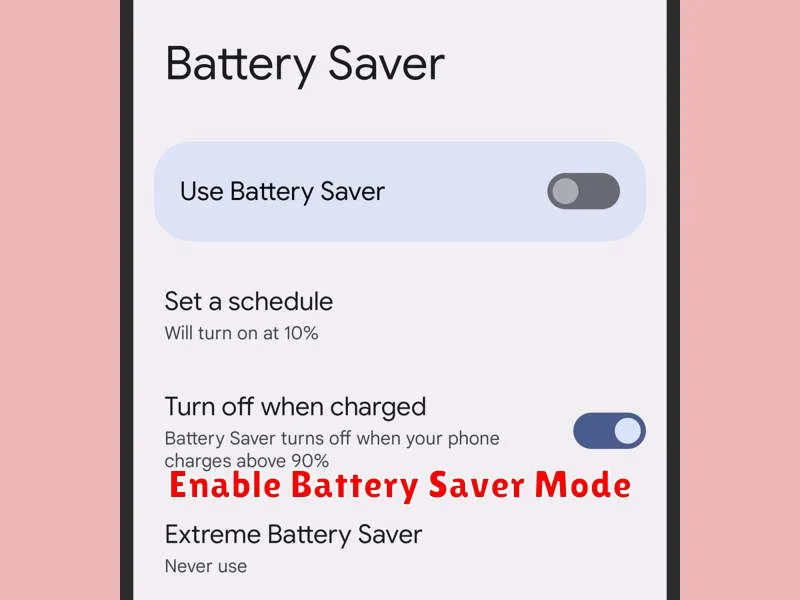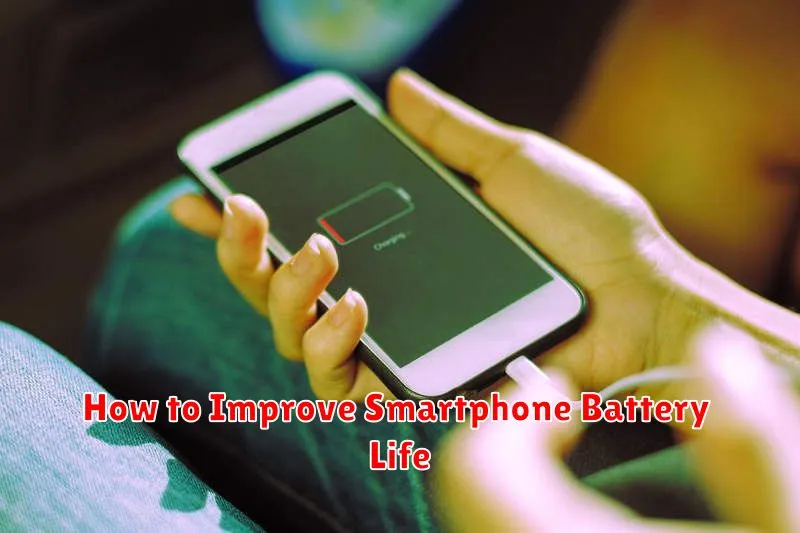Is your smartphone constantly teetering on the brink of a dead battery? Do you find yourself perpetually searching for a power outlet? Learning how to improve smartphone battery life is essential in today’s fast-paced, connected world. This article will provide practical and effective strategies to maximize your smartphone’s battery performance, helping you stay connected for longer without the constant worry of a low battery warning. We’ll explore various techniques, from simple settings adjustments to understanding how your apps consume power, empowering you to take control of your smartphone battery life.
Extending your smartphone battery life is achievable regardless of your device’s age or operating system. Whether you’re an Android user or an iPhone enthusiast, the tips outlined in this article will help you improve smartphone battery life significantly. We’ll delve into the factors that drain your battery and provide clear, actionable steps to optimize your smartphone battery usage and keep your device powered throughout your busy day. Say goodbye to “low battery anxiety” and learn how to make the most of your smartphone’s power potential.
Understanding Battery Health
Battery health refers to the battery’s ability to hold a charge and deliver power compared to when it was new. A healthy battery will power your device for a longer duration than one with degraded health.
Several factors influence battery health. Charge cycles, the process of charging a battery to 100% and then using all of that charge, contribute to battery aging. High temperatures can also accelerate degradation. Likewise, consistently keeping your battery at a very high or very low state of charge can also negatively impact its lifespan.
Most smartphones provide tools to check battery health. Monitoring this information allows you to understand how your usage patterns affect your battery’s lifespan and make adjustments to prolong it.
Enable Battery Saver Mode

Most modern smartphones include a built-in Battery Saver Mode (or Low Power Mode). This feature can significantly extend battery life by limiting background activity, reducing screen brightness, and optimizing performance.
Enabling Battery Saver Mode is usually straightforward. Access your device’s settings, typically through the notification shade or the main settings app. Look for a “Battery” or “Power” section. Within this section, you should find the option to activate Battery Saver Mode.
While Battery Saver Mode is effective in prolonging battery life, it’s important to note that it might temporarily restrict certain functionalities, such as push notifications or app refresh rates. Consider enabling this feature when you anticipate extended periods without access to a charger.
Managing Background App Activity
Background app activity is a major drain on battery life. Apps running in the background consume power even when you’re not actively using them. Restricting this activity can significantly extend your battery life.
You can manage background activity through your phone’s settings. Most modern smartphones offer options to restrict background activity for individual apps. You can choose to allow background activity all the time, only while using the app, or never.
Consider which apps truly require background activity. For example, music streaming apps need this functionality to play music while you use other apps. However, social media apps may not require constant background access. Limiting background activity for less essential apps is a simple way to improve battery performance.
Screen Brightness and Timeout Settings
Your screen is a major power consumer. Lowering the brightness significantly impacts battery life. Most smartphones offer an “auto-brightness” feature that adjusts to ambient light, which is highly recommended. Manually setting your brightness to a lower, comfortable level also works effectively.
The screen timeout setting determines how long your screen stays on after you stop interacting with your phone. Reducing this timeout period prevents the screen from staying lit unnecessarily. A shorter timeout, such as 15 or 30 seconds, is often sufficient and can contribute to noticeable battery savings.
Updating Apps Regularly
App updates often include optimizations that improve efficiency and reduce battery consumption. Developers frequently address bugs and improve code, leading to better performance and reduced strain on your device’s battery. Failing to update apps can mean your phone is running less efficient versions, needlessly using more power.
Set your apps to update automatically through your device’s settings. This ensures you benefit from the latest improvements without manual intervention. Regular updates are a small step that can contribute significantly to extending your smartphone’s battery life.
Charging Habits That Extend Life
Maintaining proper charging habits plays a critical role in prolonging your smartphone’s battery lifespan. Avoid consistently charging to 100%, as this can stress the battery. Instead, aim for a range between 20% and 80% for optimal longevity.
Similarly, avoid completely draining the battery to 0% whenever possible. This deep discharge can also contribute to premature battery degradation. Short, frequent top-ups are preferable to long, full charges.
Finally, be mindful of temperature. Avoid charging your device in extremely hot or cold environments, as extreme temperatures can negatively impact battery performance and lifespan.
Monitoring Battery Usage Stats
A crucial step in improving your smartphone’s battery life is regularly monitoring its usage statistics. Most modern smartphones offer built-in tools to track battery consumption by apps and system processes.
Accessing these statistics allows you to identify power-hungry apps or unusual activity that may be draining your battery. Pay close attention to apps consuming a disproportionate amount of power, especially those running in the background.
Understanding your battery usage patterns enables you to make informed decisions about app usage, settings adjustments, and potential solutions for optimizing battery performance.

